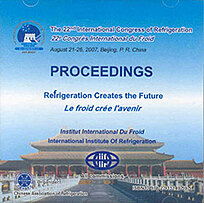
Summary
The ventilation and air-conditioning systems of buildings supply a comfortable environment for work and life; however, because of the existence of sediment in ventilation ducts, air-conditioning systems can play a role in the spreading of fire spread and diffusion in buildings. Therefore, this paper analysed factors influencing occurrence and spread of fire which were caused by sediment in air-conditioning systems. Experiments selected sawdust as a kind of sediment. In simulated fire scenarios, the resistance coil was used to ignite the sediment disposed in the ventilation tube. The scopes of the testing included temperature distribution and influential length of hot smoke in ventilation tube under fire circumstances. Numerous thermocouples were installed at various cross-sections and different measure dots within ventilation ducts to measure the temperature field. The results indicated that the factors such as air velocity and thickness of sediment had an influence on the speed of temperature distribution and length of hot smoke.
Available documents
Format PDF
Pages: ICR07-B1-506
Available
Public price
20 €
Member price*
Free
* Best rate depending on membership category (see the detailed benefits of individual and corporate memberships).
Details
- Original title: Experimental study of temperature field distribution in ventilation ducts when the sediment is burning.
- Record ID : 2008-0335
- Languages: English
- Source: ICR 2007. Refrigeration Creates the Future. Proceedings of the 22nd IIR International Congress of Refrigeration.
- Publication date: 2007/07/21
Links
See other articles from the proceedings (839)
See the conference proceedings
Indexing
- Themes: Other air-conditioning equipment
- Keywords: Fire; Measurement; Temperature; Air; Duct; Air conditioning
-
An experimental study on fire combustion model ...
- Author(s) : LONG J., LI N., LIU Q., et al.
- Date : 2007/07/21
- Languages : English
- Source: ICR 2007. Refrigeration Creates the Future. Proceedings of the 22nd IIR International Congress of Refrigeration.
- Formats : PDF
View record
-
SYSTEM EFFECT FACTORS FOR AXIAL FLOW FANS.
- Author(s) : ZALESKI R. H.
- Date : 1990
- Languages : English
View record
-
The nulling test: a new measurement technique f...
- Author(s) : FRANCISCO P. W., PALMITER L. S.
- Date : 2001
- Languages : English
- Source: ASHRAE Transactions. 2001 Winter Meeting, Atlanta, GA. Volume 107, part 1 + CD-ROM.
View record
-
FLOW PATTERNS OF SMOKE-FILLED AIR IN BUILDINGS ...
- Author(s) : MIZIELINSKI B.
- Date : 1989/08/01
- Languages : English
View record
-
Saubere Luftleitungen.
- Author(s) : FITZNER K.
- Date : 2005/11/16
- Languages : German
- Source: DKV-Tagungsbericht 2005, Würzburg./ 2005 Proceedings of the DKV Conference, Würzburg.
View record
